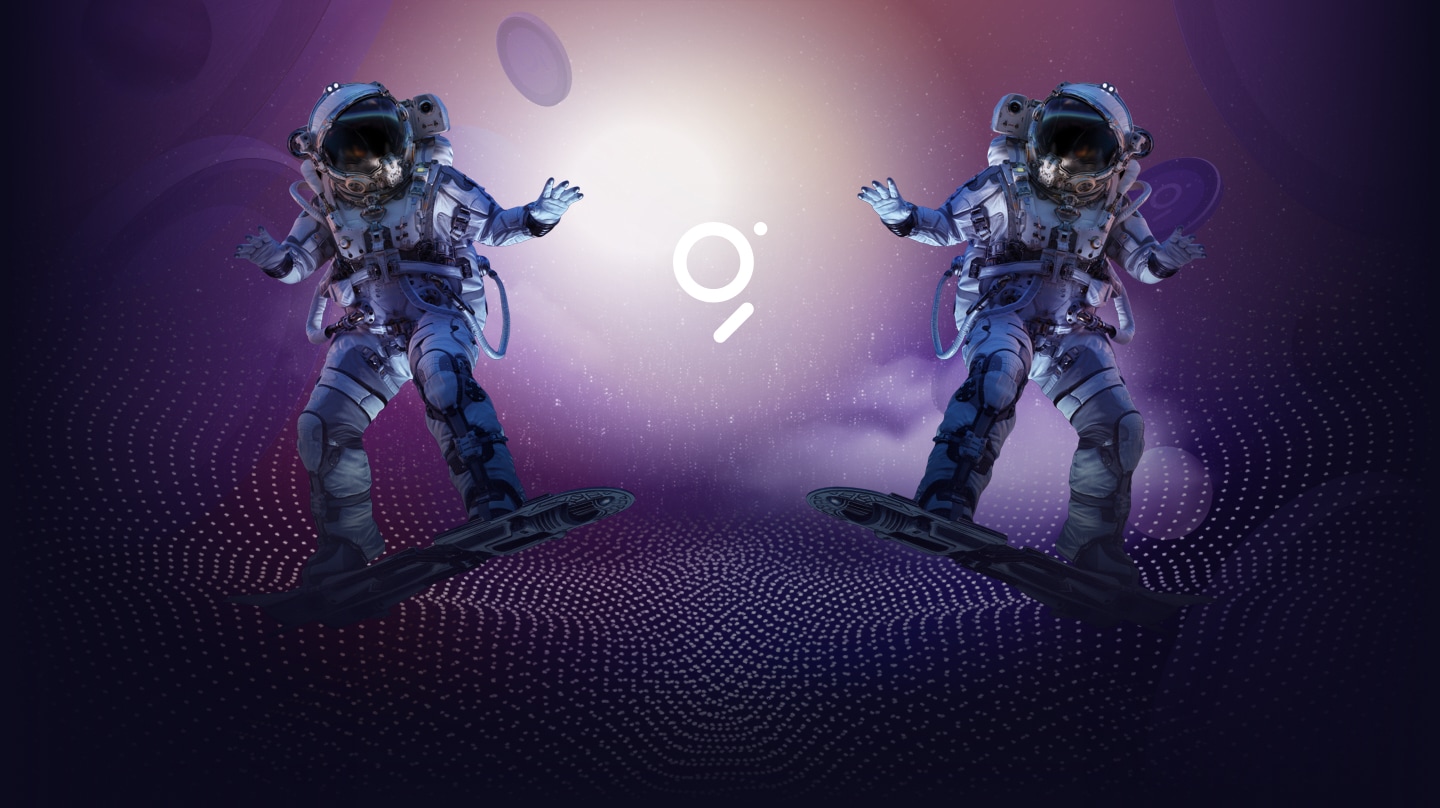

The Graph Foundation allocates over $2.8 Million to Grants & Ecosystem Support in Wave 2
The Graph Foundation to provide over $2.8M in funding to grants and ecosystem support in Wave 2, in addition to $60M Core Dev Grant to StreamingFast.
The remarkable Graph community has shown nothing but dedication and grit since mainnet launch in December. Working for a protocol means we’re all in this together. The community has been contributing from all angles; whether you’re an Indexer, Delegator, Curator, subgraph developer, or community builder, all roles have proven to be crucial in the decentralized web.
Earlier this year, The Graph Foundation allocated over $5M to Wave 1 grantees and ecosystem contributors. In Wave 2 we’re excited to be distributing over $2.8M to grantees focusing on protocol R&D, tooling building subgraphs and dapps, community building and security audits. On top of the successful Wave 2 grants program, the Foundation awarded a to work on Graph Protocol development.
We heard feedback from the community for tooling recommendations, useful dapps and gaps in subgraphs across the decentralized web. We have since launched , a place where anyone can participate and receive a grant for work that’s been requested. We need your help building , and ! The Graph Foundation is here to support your building needs, developing new critical infrastructure and letting your creativity blossom in Web3! To check out more highlights from builders in The Graph ecosystem, follow @GraphGrants on Twitter and keep an eye out for #GraphGranteeSpotlights.
Wave 2 Grants
We received over 100 applications in Wave 2, from Brazil, Canada, Japan, Russia, US and more! Applicants were assessed based on the project’s expected impact, community feedback, relative significance and urgency in the ecosystem. Grantees were reviewed by Graph Domain Experts who are key contributors in the community, including members of the Foundation, Council Members, Edge & Node, Indexers, Delegators and other builders.
All grants are paid in GRT, distributed monthly or quarterly as milestones are met. If you did not receive a grant in Wave 1 or 2, don’t fret! Applications are always open and welcome, learn more about the Grants Program , as well as continuous RFPs that will be posted .
Read the detailed descriptions for Wave 2 grants and check out highlights below:
Protocol Infrastructure ~$90K
- zkSNARK Protocol Research - Justin Thaler, Riad Wahby, Srinath Setty ($60K)
- Protocol Development - Chainsafe ($24K)
- Alternative Open Ethereum Archive Node - Ionut Scirlet ($3K)
- The Graph Protocol Support - Vinícius Rodrigues Miguel (3K)
Tooling ~$290K
- Unit Testing Framework - LimeChain ($65K)
- Open Source Code Tool - Xiki ($50K)
- Mesh Engine - Protean Labs ($50K)
- GraphGen - Protean Labs (45K)
- Subgraph Analytics Framework - Bubble Tea ($30K)
- Allocation Optimization Tool - Anyblock Analytics ($30K)
- GraphQL-request Abstractions Library - David Schwartz ($20K)
Dapps and Subgraphs ~$365K
- Decentralized Discourse Graph for Promoting Synthesis - Rob Haisfield ($75K)
- Uniswap V3 LPing Tool - Croco Finance ($15K)
- Liquid Staking - Claystack ($30K)
- Liquid Staking - Tenderize ($30K)
- IndexCoop Subgraph - Prabhaav Bhardwaj ($2K)
- Argent Wallet Subgraph - Hadrien Croubois ($2K)
- USDT Subgraph - Hadrien Croubois ($1.5K)
- ERC20 Subgraph - Prabhaav Bhardwaj ($1K)
- Graph Help Bot - Dzianis Hlushakou ($3K)
- Graph Rewards Bot - Aleksandr Shabanov ($3K)
- Staking Rewards - Kenneth Garofalo ($1K)
- Subgraph Development & Support - Protofire (~$125K)
- Subgraph Development & Support - BootNode (~$75K)
Community Building ~$280K
- Graph Community Artwork ($35K)
- GRTiQ Community ($30K)
- DeFi Education Initiative - GoodFi ($20K)
- Subgraph Developer Bootcamp - Raid Guild ($15K)
- Graphtronauts Community ($15K)
- GRTFans - NAS Graph/Nebulas ($12K)
- The Graph on Proof-of-Learnig (PoL) - Tomohiro Tagami ($5K)
- Graph Core Dev Meeting Note Taking - Ethan Marse ($1,800)
- The Graph Video/Animation - Dean.Land ($1K)
- Subgraph Tutorial for Celo Smart Contracts - Shardul Aeer ($500)
- Gitcoin Grants CLR Matching Pool - GR 10 ($20,000)
- Scaling Ethereum ($16K)
- ETHOnline ($16K)
- HackMoney 2 ($16K)
- HackFS ($16K)
- Layer2 Hackathon ($15K)
- Web3Hack ($10K)
- Gitcoin Hackathon Round 10 ($10K)
- NFT Hack ($7K)
- ETHOdyssey ($6.5K)
- Chainlink Spring 2021 Virtual Hackathon ($5K)
- Gitcoin Hackathon Round 9 ($5K)
- Hack for Inclusion ($2K)
We’re thrilled to announce The Graph’s second wave of grants. We can’t wait to see our grantees succeed and what’s yet to come in Wave 3!
Research & Security Audits ~$1.5M
Novel and complex systems such as The Graph mandate continuous rigorous and scientific research across different domains ranging from economics and behavioral science to AI/ML (Artificial Intelligence / Machine Learning). For this reason, the Foundation is continuing engagements with multiple researchers and reputable firms such as Semiotic AI, BlockScience and Prysm Group.
Semiotic AI applies AI techniques and Reinforcement Learning (RL) strategies to improve and automate both query cost modeling and latency prediction, as well as query price negotiations. The research will help inform protocol improvements focused on the query market and stress testing. Their work will also assist network participants handle query pricing based on Indexer infrastructure costs. They recently open sourced their !
BlockScience has already built using the (complex adaptive dynamics Computer-Aided Design) to design, model and validate the design and mechanics of complex systems and networks. This “Design Digital Twin” will be the baseline work for testing and validating potential improvements to the Delegator subsystem designs.
Prysm Group is an economic auditing and consulting firm that is supporting deep economic analysis of Indexer and Delegator behaviors, expanding past work to work on a new mathematical and analytical model of Indexer activity. The Graph Foundation has also continued audit engagements with OpenZeppelin, Consensys Diligence and Chainsafe to ensure security of Graph Protocol components.
We are actively seeking developers and researchers to identify and report any other vulnerabilities, including in the network contracts, Graph Node, protocol logic and state channels. Follow our security policy for appropriate bounty disclosure: .
Ecosystem Contributors & Foundation ~$350K
The Foundation has allocated funding to operations and Ecosystem Contributors for the next year, to support the community, protocol strategy, grants, educational initiatives and more. We collaborate with many Ecosystem Contributors including Community Managers globally that focus on growing The Graph in their regions, and Graph Domain Experts who empower individuals to contribute. Additionally, there are unofficial meme makers and Meme Competition Winners who have been integral to our growth! The Graph is committed to building a community that continues to support our creators and builders.
The Foundation’s role is intended as a facilitator, bringing together the best builders and resources to improve the protocol and grow the ecosystem. We’re excited to welcome Pedro Diogo (Technical Program Manager) and Oliver Zerhusen (Ecosystem Manager - Governance) to the team.
We’re still hiring and expanding operations! Check out our if you’re interested in working closely with The Graph Foundation and technical product teams.

What’s Next
We just launched Curation alongside two new products: and ! This means anyone can permissionlessly curate data and help maintain quality of subgraph data, and any developer can easily publish subgraphs to the decentralized network! Read about how you can as a Curator or Subgraph Developer.
Wave 2 just ended and we’re already ramping up for Wave 3! We’ll continue to prioritize the categories mentioned above, however we’d also like to see more contributions around:
- Multiblockchain expansion support, tooling & educational materials
- Curation tooling & educational materials
- Subgraph development
- Subgraph features & tooling
- New Web3 dapps using subgraphs
- The Graph Network Reputation
- Protocol development support
- L1 blockchain node optimizations
- Educational content and curriculum development
- Memes
While the grants process currently includes many Domain Experts, the Foundation is also exploring ways to decentralize further to enable greater participation in funding decision making. Look out for more news on how the community can get involved!
In the interim between applying for your next grant, there are many additional ways to get involved with . You can become a , , build , vote on upcoming , the options are limitless. If there are any projects you admire in the web3 space that are not using subgraphs, we encourage you to let them know to use subgraphs.
Don’t forget! Anyone is eligible to apply for a grant with any idea around the Community, Dapps, Subgraphs, Tooling or Protocol improvements , or take on a call from the ecosystem by looking through the range of our RFPs .
Resources to Get Started
About The Graph
is the leading indexing and query protocol powering the decentralized internet. Since launching in 2018, it has empowered tens of thousands of developers to effortlessly build and leverage across countless blockchains, including Ethereum, Solana, Arbitrum, Optimism, Base, Polygon, Celo, Soneium, and Avalanche. With powerful tools like Substreams and Token API, The Graph delivers high-performance, real-time access to onchain data. From low-latency indexing to rapid token data, it serves as the premier solution for building composable, data drive dapps.
Discover more about how The Graph is shaping the future of decentralized physical infrastructure networks (DePIN) and stay connected with the community. Follow The Graph on , , , , , and . Join the community on The Graph’s , join technical discussions on The Graph’s .
oversees The Graph Network. , , , and are five of the many organizations within The Graph ecosystem.
